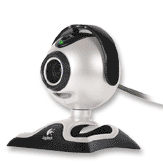








 |
- What are the benefits of using the PitchCommand
System?
-
What are the components of the system?
-
What are the minimum requirements for the
computer to operate the PitchCommand System?
-
Why is measuring the pitch speed and location
so important?
-
What kind of reporting capabilities does the
system have?
- What approach would be suitable for the beginning pitcher?
-
What approach would be suitable for an intermediate level
pitcher?
-
What approach would be suitable for an advanced level pitcher?
- Is the system suitable for softball as well as baseball?

The PitchCommand System will benefit a broad range of player skill levels
depending on how it is configured.
- A ten year old would configure the target to represent the whole
strike zone. At this early stage of his development the player needs to be
able to simply throw strikes.
- Once the player can consistently hit the whole strike zone with his
fastball then he might refine the target to be the lower half of the
strike zone. The ability to throw low strikes consistently is critical.
- Once the pitcher has developed his command to the point where he can
consistently throw his fastball to the lower half of the strike zone he
might then concentrate on developing his changeup.
- If the pitcher has developed his command of the fastball and change to
where he can consistently throw to the lower part of the strike zone, this
could carry him to high school.
- A professional with highly developed control might work on
consistently throwing to locations at the margins of the strike zone.

The system consists of the user's personal computer, a camera, USB
extender cables, and the Atec Pro Pitcher's Practice Screen with Stand



Optionally, a Jugs Professional Sports Radar with stand and RS-232C cable
can be used in order to measure the speed of the pitches.

The minimum system requirements for the Logitech QuickCam Pro 4000 web
camera is
 | Windows 98, Windows 2000, Windows Me, Windows XP
|
 | Pentium II 400, Celeron, AMD Athlon processor, or higher (Pentium III
500, Celeron, AMD Athlon recommended). |
 | 64 MB RAM ( or minimum OS requirement whichever is higher).
|
 | 200 MB free hard drive space
|
 | 16-bit color display adaptor
|
 | CD-ROM drive |


An important step in truly understanding an event is the measurement
phase. After you throw a bullpen, how do you evaluate the session. Prior to
the introduction of the PitchCommand System the evaluation was necessarily
subjective. The catcher might report to the pitching coach that the pitcher
is "looking good", which is a subjective impression. If the PitchCommand
System is being used then a record for every pitch is created. The
characteristic values recorded are
 | whether the pitch was thrown from a stretch or windup
|
 | the type of pitch thrown (fastball, slider, etc.)
|
 | the intended target. The intended target could vary from a target as
large as the whole strike zone to a target as small as a baseball.
|
 | the actual spot where the baseball struck. If the actual location is
marked on the intended target we know whether or not the pitcher hit the
target. |
 | the intended speed. |
 | the actual speed |

The PitchCommand System can report on the pitches thrown in a variety of
manner. The pitches are typically reported on by
 | pitch type - fastball, curveball, slider, etc. |
 | target - complete strike zone, lower half of the strike zone, upper
half of the strike zone, etc. |
 | by bullpen session number |
A sample report can be downloaded -
SampleReport
The starting point will be throwing strikes. The system will be
configured for the pitcher to throw at the complete strike zone. Once the
pitcher can throw strikes at a 60% to 70% rate then he can progress to more
advanced skill development,
Once the pitcher can throw strikes consistently he should concentrate on
throwing to the lower half of the strike zone. Once he can throw low
fastball strikes consistently he can work on the low change.
At this point the pitcher can throw to the four quadrants of the strike
zone, control variations in speed and pitch sequences.
Absolutely. Pitching is an equally important element of softball as it is
for baseball.

Dennis C. Bremner
Copyright [PitchCommand]. All rights reserved.
Revised: September 26, 2006.
|
|
Greg Maddux |
|
Maddux has understood the importance of pitching mechanics since
becoming a professional in
1984. Greg was just a 5-foot-11, 150-pounder after graduating high
school and had to compete
with bigger, more powerful pitchers in the minors. So what he lacked in
power, he learned to
make up for with razor-sharp control. Even now, he wouldn’t be ranked
among baseball’s
fireballers."I could probably throw harder if I wanted, but why?" Greg
told Sports
Illustrated."When a lot of pitchers, especially young pitchers, are in a
jam, they try to throw
harder. Me, I just try to locate my pitches better."
|
|
Greg Maddux |
|
And it doesn’t matter if
his fastball tops out at a moderate 87 miles-per-hour."Pitching is the
art
of messing up the hitter’s
timing, of outguessing the hitter," Maddux has said. He varies the
speed of his pitches to
make his fastball appear faster and to throw off the hitters’
timing."You
never feel like you’re
getting a real good swing," says the San Diego Padres’ Tony Gwynn, one
of
the game’s all-time best
hitters."He makes you hit his pitch, a pitch in his zone, not yours."
|
|

